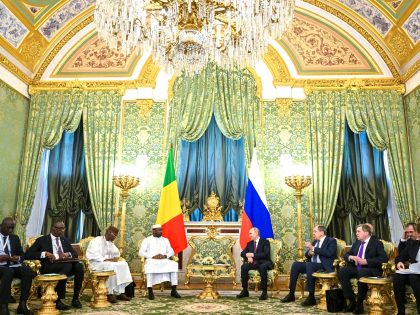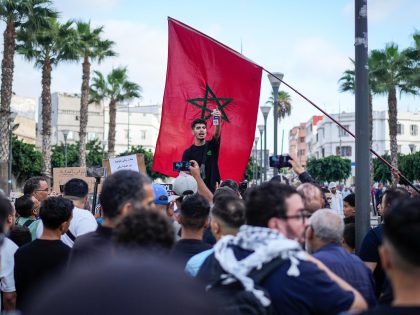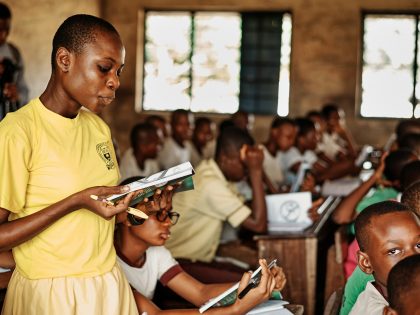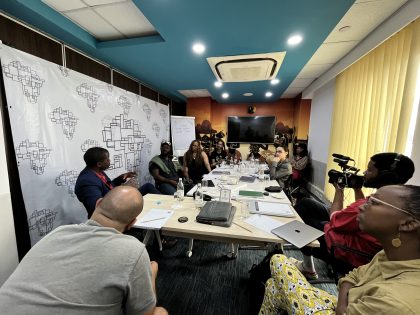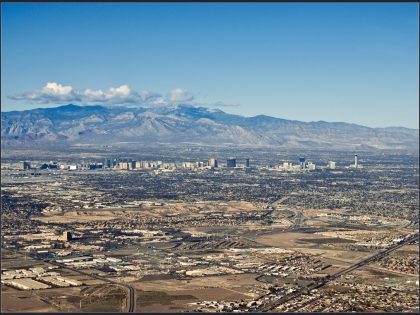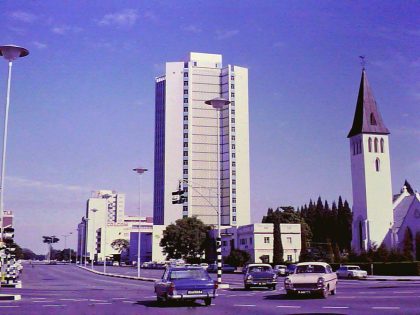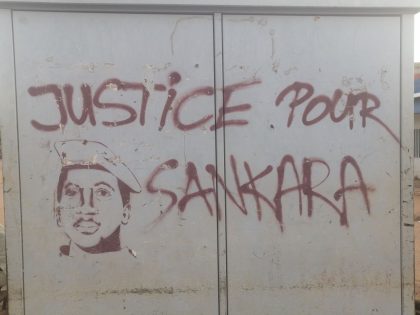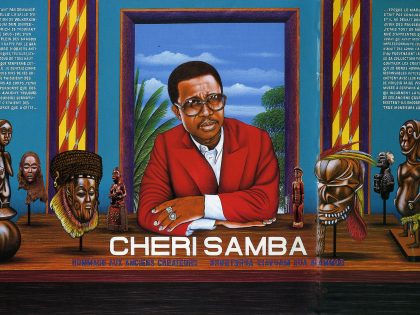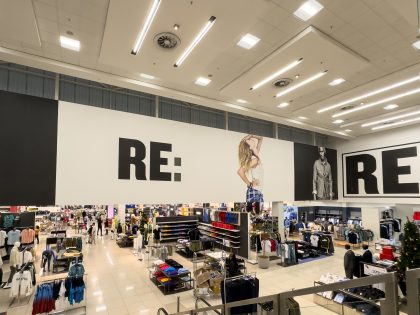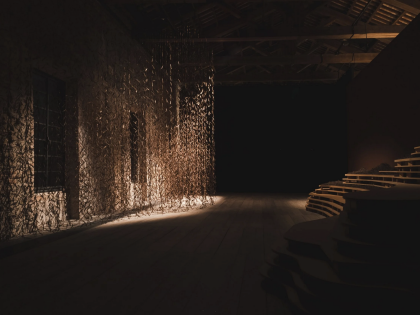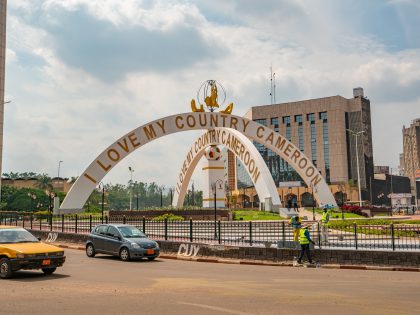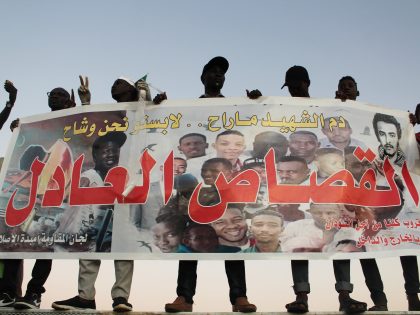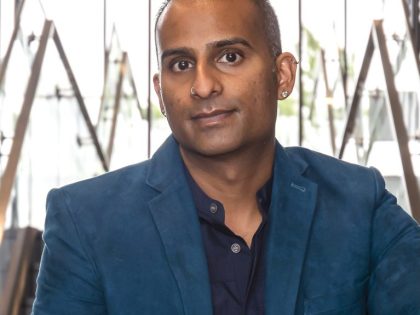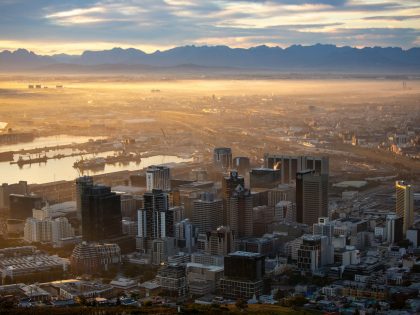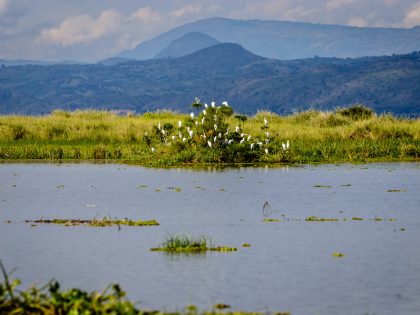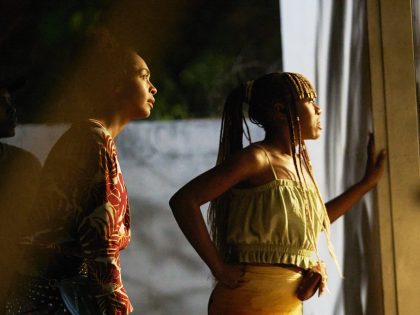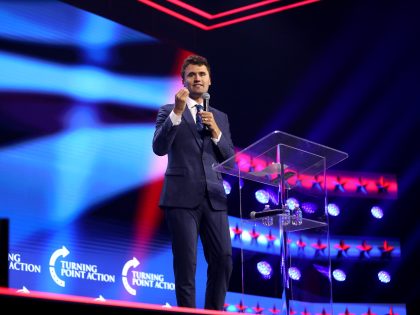Debate: The future of the workers’ movement in South Africa

Image: Abayomi Azikiwe (Flickr)
In May this year, South Africa will host its 5th general election since the advent of democracy in 1994. The ruling African National Congress have dominated these elections until now (62.6% of the vote in 1994, 66.3% in 1999, 69.6% in 2004 and 65% in 2009) and are poised to get a majority again, though there are questions about the size of that majority given widespread discontent and disillusionment with the current ANC leadership. Yet, opposition parties have failed to take advantage of this, with most offering up media stunts and tepid criticism of the ANC’s economic policies. The result is that most voters hold their noses and vote ANC or stay at home. Unfortunately, the media don’t help. Nevertheless, there are signs of a shift in South African politics outside “parliamentary politics.” One such development was the decision in December 2013 by the country’s largest union, the National Union of Metalworkers of South Africa (Numsa), to formally break from the “tripartite alliance” the ANC maintains with the trade unions and the South African Communist Party (SACP) and that has been going on for at least more than 2 decades now. NUMSA also announced that it would begin the process of building a left political alternative to the tripartite alliance. Below we re-publish a piece (originally published in The Con Mag) by AIAC’s Ben Fogel (he is also an editor at Amandla Magazine and a contributor at Jacobin Magazine) on the significance of this break. But we also asked a number of labor commentators–trade unionist and political economist Peter Dwyer, sociologist Sakhela Buhlungu, historian Alex Lichtenstein and former trade unionist and political scientist Steven Friedman–to send us short comments on Ben’s piece to get the debate started. All that good stuff is below. Let’s debate.
***
Benjamin Fogel:
In January 1973, dockworkers in Durban embarked on a wave of wildcat strikes against low wages. In total, some 61 000 workers took part. What became known as the “Durban Moment” not only broke the industrial relations framework that had been established after black trade unions had been smashed by the apartheid state in the 50s and 60s, but also led to the rebirth of the black trade union movement, which saw the establishment of the Congress of South African Trade Unions (Cosatu) in 1985.
A similar moment took place on August 17 2012, the day after 34 workers were shot and killed at Marikana in the North West. Workers, rather than ending the strike after the massacre, continued their attempt to secure a new wage of R12 500. They were soon joined by tens of thousands other workers from across the platinum belt. The strike lasted another 90 days. Cosatu’s biggest affiliate at the time, the Nation Union of Mineworkers (NUM), leaked tens of thousands of members as it failed to support workers’ demands. In many cases, it sided with management against striking workers.
This led to a third moment, which took place between December 17 and 20 2013, as Cosatu’s largest affiliate – and the largest union in African history – the National Union of Metalworkers of South Africa (Numsa), held a special national congress to decide on the future of its relationship with the trade union federation and its alliance partners, the African National Congress (ANC) and South African Communist Party (SACP). At the end of the congress, Numsa decided it would formally break away from the tripartite alliance after being in it for more than 20 years. It set its sights on expanding its scope to other sectors, including the mining industry, and declared open war against the faction led by Cosatu president Sdumo Dlamini, which is dominating the union’s leadership. Most significantly, it began the process of building a left political alternative to the tripartite alliance.
The key moment of the Numsa congress didn’t take place in some back room meeting of its elite or in the commissions that debated and decided on Numsa’s resolutions; it took place on the first night of the conference when Rehad Desai’s documentary on Marikana, Miners Shot Down, was screened to more than 1 000 delegates, guests and journalists. The proceedings of the next day began when delegates marched into the venue clutching R100 rand notes singing, “Who killed Mambush at Marikana? Zuma must resign. Phiyega must resign. Ramaphosa must resign.”
At that moment, it became apparent that Numsa, would break with the alliance and this would initiate what a delegate described as “the post-Mandela period” in South African political history. In the words of its new president, Andrew Chirwa, “The state of the working class is in shambles. The working class is leaderless.” Perhaps stepping into that void, Numsa gave R350 000 it had raised to some of the Marikana worker-leaders and their family members. A worker-leader wearing an Association of Mineworkers and Construction Union (Amcu) T-shirt began singing to a Numsa delegation that had been told repeatedly by Cosatu’s leadership that Amcu is a homicidal vigilante union intent on undermining the unity of the working class for the benefit of its bosses. Later that evening, a Limpopo delegate said, “We can’t vote for an ANC that kills workers with taxpayers’ money.” He added: “This is the worst thing the ANC has done since 1994 … It wouldn’t have happened under Mandela.”
Why is Numsa splitting from the tripartite alliance? These reasons are pretty straightforward: Despite numerous attempts, Cosatu has been unable to influence the policy direction of the ANC since 1994 and has consistently moved in a neoliberal direction, first through the adoption of the Growth, Employment and Redistribution programme (Gear) in 1996 and now more recently with the adoption of the National Development Plan (NDP). As Numsa general secretary Irvin Jim admitted at the congress, “the strategy of swelling the ranks of the SACP and ANC has failed.” The ANC remains, as its leaders like to point, out a “multi-class formation”, but the unions and left-leaning sections of the alliance are becoming increasingly politically marginal and the SACP has transformed into a reactionary clique that uses Stalinist jargon to defend the president at all costs. Or, as Jim put it: “We want a vanguard party, not Blade’s fish and chips,” in reference to SACP secretary-general Blade Nzimande’s single-minded determination to liquidate whatever the SACP once stood for into unconditional defense of President Jacob Zuma.
The last attempt to force the ANC left was at Polokwane, in which the alliance’s left made a Faustian pact with Zuma, his shady backers and various disparates to come into power and break with “the ’96 class project” and remove its representative in chief, former president Thabo Mbeki. But this, ultimately, would prove fatal for the left. Their mistake was twofold: Firstly, in thinking that they could call the shots and control Zuma, and secondly in individualising the political struggle within the alliance through the figure of Mbeki. The supposed leftward turn of the ANC after Polokwane never came, and the much-vaunted “Lula moment” proved to be phantasmagoric. The working class has been rewarded for bringing Zuma to power with e-tolls, the youth wage subsidy, the NDP and, of course, Marikana.
The Numsa congress saw a break not only with the figure of Zuma, but the idea of the ANC as a vehicle for pursuing the interests of the working class. The SACP was the object of so much scorn that the possibility of winning it back wasn’t even considered. This signifies a change in political consciousness. Whereas before the ANC could never be wrong, merely the people in charge of it, Numsa argued that the ANC viewed workers as voting fodder that could be ignored between elections. As the final declaration put it: “There is no chance of winning back the alliance to what it was originally formed for, which was to drive a revolutionary programme for fundamental transformation of the country.” And with these words, Numsa broke with the ANC. “Numsa as an organisation will neither endorse nor support the ANC or any other political party in 2014.”
Following this, it declared: “Numsa calls on Cosatu to break from the alliance. The time for looking for an alternative has arrived.” Numsa sees part of its mission to attempt to fulfill that leadership vacuum both in terms of the “leaderless” working class and in terms of the left in South Africa more broadly. It seeks this in the face of the disintegration of the alliance’s left, the continued irrelevance of much of the molecular independent left and the collapse of social movements in the past five years or so.
The media expected Numsa to announce it would form a mass workers party with immediate effect to compete in the 2014 elections or announce its merger with the Economic Freedom Fighters (EFF) or something along those lines. But the trade union chose to pursue a strategy of building a united front with left-leaning elements of civil society, other unions and community organisations before it moves towards the stage of building a party. There have been suggestions that Numsa and the EFF are natural allies, but both Numsa membership and leadership were highly critical of the EFF during the conference. It was asserted that the EFF was anti-capitalist rather than being socialist, meaning that it was not committed to workers’ control as a principle of economic transformation. Furthermore, Numsa regards EFF leaders as undemocratic and is highly suspicious of Malema and his cohorts’ previous history “as capitalists”. All of this is clearly outlined in the report given at the congress by Jim.
What type of party Numsa would evolve into is still very much an open-ended question. It could be a broad mass workers party or it could be another vanguard party. But, like the “Durban Moment” in 1973, this Numsa moment marks a new direction in the trajectory of the workers movement in South Africa.
****
RESPONSES
Sakhela Buhlungu:
It has taken more than 20 years for the dominant current of South Africa’s labour movement to begin to emerge from stasis resulting from its embeddedness within the ruling political block led by the African National Congress. The massacre of mineworkers at Marikana and the subsequent organisational implosion of the National Union of Mineworkers (NUM) are emblematic of the desire by COSATU workers to find an alternative voice, on the one hand, and of the determination of tripartite leaders to maintain their hegemonic position in the labour movement, on the other. It therefore natural that many left-leaning activists will find the NUMSA’s rebellion against the ANC, the SACP and the conservative block within COSATU a welcome development to be applauded and celebrated. After all, many of them have long argued that the “swelling the ranks of the ANC” approach does not, and will not work. Like them, I find it so refreshing to see NUMSA activists and their allies show up ANC, SACP and some COSATU leaders for being shallow, dishonest and, in some cases, irredeemably corrupt.
Having said that, I find some of the celebratory support for the wave of militant mobilisation, whether in the form of AMCU or NUMSA, unhelpful and myopic. It is not good enough to stand on the sidelines and cheer the new wave of activist unionism. We should also help them think through the pitfalls they will face along the way and some of the implications of the decisions they take. I think it is extremely shortsighted any union, NUMSA included, to make an individual (Vavi) the focus of their campaign just as it was for Cosatu to give unconditional support for Zuma in 2005. After all, Vavi is not an angel in the current contestation. There are many who will say that he is getting a dose of the medicine that he administered on many of his opponents in the past.
The general thrust of the campaign for socialism is attractive. But all we have at present at present are slogans and dogma. In the absence of detail and political clarity it is very easy for a well-meaning campaign to be hijacked by demagogues and charlatans who thrive in conditions of political and confusion and absence of clarity.
The reality of the current situation is that COSATU has collapsed. Whatever remains of it will be a shadow of the former ‘giant’ whose birth Cyril Ramaphosa so eloquently proclaimed in December 1985. Anything that is to take its place will have to break the mould and adopt a new paradigm. In some respects NUMSA is doing this, for example by moving organizing towards value chains. But even here, it is not clear if the goal is to have one super general union. I also find their brand of Marxism archaic and often crude. A basic reading of Marx’s biographies will show any reader that he would have opposed many of the strategic choices being made by invoking his name. After all, it was Marx himself who once chastised his son-in-law, Paul Larfargue, for being too Marxist than Marx himself.
***
Peter Dwyer:
I fully agree that the decision by NUMSA to break from the ANC and also its call for COSATU to break from the Alliance will go down as a turning point in the history of the South African working class. I would have included the ‘Polokwane moment’ as important point on the timeline that has been unfolding since 1999. I have long argued that many on the Left outside of the Alliance underplayed the importance of the Left inside the Alliance replacing Mbeki with Zuma. What I am more circumspect about is Benjamin’s implicit assertion that the NUMSA moment represents a more generalised change in political consciousness. We don’t yet fully know how this move has gone down at the rank and file level who make up the bulk of NUMSA’s 340,000 members. Call me an old fashioned empiricist but we need to hear more of their voice and those in and around the Alliance, in COSATU and the SACP. Whilst Jim and others are no longer welcome in the SACP, we should not underestimate the continuing importance of the SACP leadership acting as a political glue to hold the Alliance together, particularly the trade unions through the structures of COSATU. The failure of FOSATU during apartheid was to build an independent working class party. The NUMSA leadership have prioritised this as an urgent ask. It will nonetheless still prove a formidable one.
***
Steven Friedman:
To a long-time labour watcher, likening Numsa’s resolutions to the 1973 ‘Durban moment’ is jarring. On reflection, Fogel may have a point–but it is hardly sure that these decisions will do for workers what the 1973 strikes did.
For the first time, a major Cosatu union–the country’s biggest–has broken with the ANC alliance and is talking openly about an alternative. This could reshape electoral politics–if Numsa does form a party and it wins 10 percent or more, the ANC could lose its majority. And so there is a chance that Numsa will be the catalyst for ending the ANC’s electoral dominance by 2019–obviously a watershed event.
But there are many ‘ifs’ attached. Numsa may not opt for a party, preferring a civil society alliance: its post-conference declaration was not overly enthusiastic about entering party politics. And if it does choose a party, winning 10% may be difficult: Numsa clearly suspects that many of its members still favor the ANC – why else say that they are free to campaign for it as long as they do this in their own time? – and it could be right. We are in uncharted territory and so we don’t know whether most union members are ready to ditch the governing party.
Numsa’s move may also do much more to change national politics than to improve worker leverage. Even if it does end the ANC’s majority, will that mean more influence for working people? Might it not simply trigger a new alliance across current party lines of interests unsympathetic to worker needs?
This is not an argument against Numsa’s position. Workers cannot remain within a nationalist alliance forever if they want their interests taken seriously. But organised workers are nowhere near a majority in this society and building a winning coalition of workers and the poor will be a long task with uncertain prospects.
Numsa’s decision may, therefore, yet enter history as a trigger to later possibilities rather than an immediate advance for worker interests.
***
Alex Lichtenstein:
In an address given to COSATU in September 2006, then Deputy-President Jacob Zuma said:
We can also never forget the role of trade unions in reviving our struggle during the 1972-73 Durban strikes. The strikes had a major impact in the revival of internal mass resistance to apartheid in the 1970’s. These strikes were led by amongst others, cadres who carried the political influence, of the revolutionary trade union federation, SACTU. This indicates the correctness of the approach of political revolutionary trade union movements, as distinguished from those union movements that concern themselves only with factory floor issues.
Like Benjamin Fogel, Zuma regarded the “Durban Moment” as the touchstone for the contribution of the workers’ movement to the liberation of South Africa. Unlike Fogel, however, in the interest of consolidating a nationalist interpretation of the history of the ANC-labor alliance, Zuma effectively wrote out of history the “workerist” perspective that did so much to shape South African trade unionism between 1973 and 1985.
Over the fifteen years I have been travelling to South Africa, on every visit I seem to encounter friends on the left who are sure that this is the moment that sections of COSATU will decide they have had their fill of a neo-liberal program dressed up in radical rhetoric, and will break with the ANC and the Alliance to form the nucleus of a workers’ party. While I have always shared their hopes, I have usually greeted these claims with skepticism. But I think this time might be different, in part because of my own reading of the history of the South African labour movement.
To put it concisely, NUMSA’s search for an alternative labour politics builds on a long tradition of workers’ control, shopfloor democracy, and struggle unionism that independent unions like its predecessor—MAWU—built during the 1970s. Denigrated then by the SACP and its allies in the ANC as “workerism” (meaning economism), this tradition never really went away, even while its most powerful vehicle, FOSATU, was absorbed into COSATU in the 1980s and then the Alliance after liberation.
Then, as now, the ANC and the SACP demanded that the labour movement subordinate what were regarded as its sectoral interests to the larger needs of the Struggle, the Transition, or the National Democratic Revolution. Then, as now, workers were expected to modify shopfloor militancy in the interest of larger strategic political goals. Then, as now, shopfloor democracy, the power of shopstewards who remained closely knit with comrades in the workplace, and the tradition of report-back and workers’ control, were expected to take a back seat to national-level collective bargaining, a growing class of union office-holders, and a labour federation that grew closer to management than to workers, replacing democracy with labour bureaucracy.
I do not want to exaggerate the degree to which this was the case immediately in 1985, with the formation of COSATU, a federation in which the power of shopfloor democracy remained, at least at first, quite strong. Because it was so central to the birth of the new unions in the 1970s, “Workerism” has remained a powerful, if buried, tendency within the South African labour movement to this day; the conflict on the Platinum Belt represents its rushing to the surface, like a dormant volcano coming to life. The effort on the part of the ANC and the SACP to suppress and overcome this tendency has been a long, drawn out struggle, and one hardly to unique to South Africa. Wherever working-class movements have joined with a national bourgeoisie in a revolutionary process, they have found that for them the struggle continues after liberation, and their former allies become their antagonists, if not their masters. The question is usually this: how long it will take the working class to see the writing on the wall? Marikana, it seems, was the revelation.

